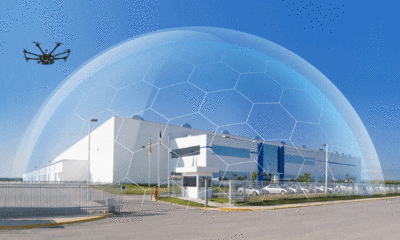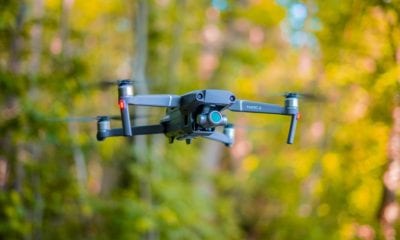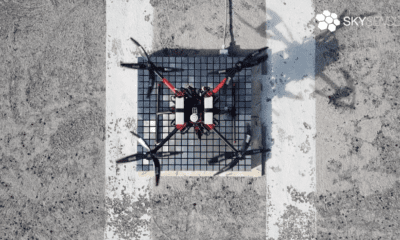SKYCORE: Forming LTE Based UAV Networks
Drones are commonly controlled with a radio transistor. Commercial transistors, easily available for sale for the common user generally have a radial range of 1 km which means that the drone cannot go more than just one kilometer away from the transistor you hold in your hand. It is very easy to replace a transistor with a Wifi module; the drone will then be controlled with Wifi. The same Wifi field can be as large as 10 km commonly, it could be larger but buildings use their own Wifi. You just can’t connect to a Wifi in your school and move out of the school all the way to your home while being connected to the same Wifi. The same stands true for drones or UAV’s (Unmanned Aerial Vehicles), while UAV’s are not controlled by transistors held by people since they’re autonomous, they do require a radio field or Wifi and their range of mobility is almost always limited by the Wifi range of the network they are connected to.
So how about controlling Drones with a field constantly available all over the city? Well, we already know about once such field. Mobile phone networks that cell phone or smart phone sims use are generally available all over entire countries. It is therefore, possible to use mobile internet connections to control UAV’s. LTE base stations that receive signals from satellites are a fairly accurate and effective solution for controlling UAV’s.
Benefits of using LTE networks in drones:
- Long range: LTE networks are transmitted by satellites and broadcasted via towers.
- Emergency situations: LTE networks usually keep operating during natural disasters and are extremely difficult to cut down or jam by malicious or terrorist activity; giving UAV’s a much better ability to operate during emergency situations.
What is EPC:
EPC (Evolved Packet Core), which is a distributed system of different nodes, each consisting diverse network functions (NFs) that are required to manage the LTE network. The EPC consists of data and control data planes: the data plane enforces operator on data traffic to/from the user equipment (UE), while the control plane provides key control and management functions such as access control, mobility, and security management.
Limitations of the legacy EPC:
A typical LTE network requires the deployment of two essential components:
- A radio access network (RAN) consisting of multiple base stations (BSs) that provide wide-area wireless connectivity to clients (UEs), and
- A high-speed, wired core network of gateways (evolved packet core, EPC) that sits behind the RAN and is responsible for all the mobility, management and control functions, as well as routing user traffic to and from the Internet.
Realizing a multi-UAV-driven RAN (BSs deployed on UAVs) with an EPC on the ground or in the cloud is one way to directly apply today’s EPC architecture to the UAV environment. Based on publicly available information, this has been the case with the current operator-driven UAV efforts. However, this faces significant limitations in delivering real value to this challenging environment. Specifically, while a tethered setup significantly limits the UAV’s mobility and ability to scale to multiple UAVs, a wireless setup incurs all the vagaries of the wireless channel. For the latter, the choice of the wireless technology becomes critical given that the EPC is responsible for setting up, routing, and tearing down all voice/data bearers. It is essential for the EPC to reliably reach all the UAVs wirelessly, including those that are potentially far away in the presence of non-line-of-sight conditions. Further, it must deliver sufficient capacity to support the traffic demands in the RAN. It is extremely challenging for a wireless technology, be it lower frequency or higher frequency, to simultaneously satisfy the needs of range, reliability/robustness, and capacity that the UAV environment demands from the critical EPC-RAN link.

SkyCore: Core at the edge with Edge-EPC architecture
Given the fundamental limitations in deploying an EPC on the ground or in the cloud to support a multi-UAV RAN, SkyCore a radical, yet standards compliant re-design of the EPC, namely the Edge-EPC architecture, to suit the UAV environment.
As the name suggests, they aim to push the entire EPC functionality to the extreme edge of the core network, by collapsing and locating the EPC as a single, light-weight, self-contained entity on each of the UAVs (BSs. Being completely distributed at the very edge of the network, such an architecture completely eliminates wireless on the critical EPC-RAN path and hence the crippling drawbacks faced by the legacy architecture in this environment.
If it is getting too complicated, here’s a simple analogy: Games that use only one processor run slower and heat up your laptop much more than the games that use more processors. With more processors, the load is divided between the processors and the game can be pushed to its limits much without a lot of effort.
SkyCore has not only just proposed this simple but smart solution for a major improvement in UAV network design and optimization; they have also created a real world prototype confirming the effectiveness of their solution.
Source: Moradi, Mehrdad & Sundaresan, Karthikeyan & Chai, Eugene & Rangarajan, Sampath & Mao, Zhuoqing. (2018). SkyCore: Moving Core to the Edge for Untethered and Reliable UAV-based LTE Networks.



























